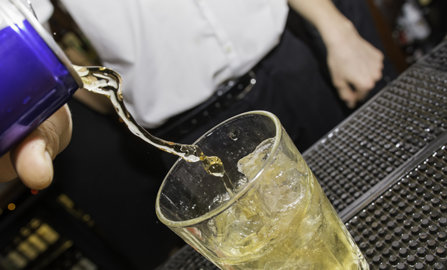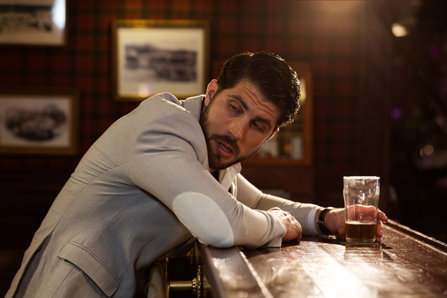Caffeinated Alcohol – A Liquid Mixture of Trouble and Risk

Caffeine and alcohol. That’s not a combination we would typically think of. But there was a time when one could purchase caffeinated alcoholic beverages. That was until 2010 when the U.S. Food and Drug Administration determined that such drinks were unsafe for human consumption.
However, the consumption of caffeinated alcohol continues, fueled by private consumers and special requests to bartenders. This has become a very difficult problem to get a handle on. All one has to do to consume caffeinated alcohol is mix an energy drink with some liquor.
Why should we be so concerned over-caffeinated alcohol? And what steps should we take to ensure that our youth does not experiment with such beverages?
Cracking Down on Caffeinated Alcohol
The FDA is calling for a crackdown on home-made, caffeinated, alcoholic beverages. But the damage might already be done because teens have long since figured out that they can get a very “exciting” experience by mixing alcohol and energy drinks. When teens do this, they are combining a depressant and a stimulant. Given the adverse health effects of alcohol and energy drinks by themselves, nothing but harm could possibly come from combining alcohol and energy drinks into one beverage.
“Although several manufacturers of caffeinated beer have withdrawn their products from the market, there is no sign that young people have decreased the practice of combining alcohol and energy drinks.”
According to Dr. Jonathan Howland of the Community Health Sciences and Department of Emergency Medicine at Boston University, “Although several manufacturers of caffeinated beer have withdrawn their products from the market, there is no sign that young people have decreased the practice of combining alcohol and energy drinks. Critically, CABs [caffeinated alcoholic beverages] may increase alcohol-related risks in a number of different domains, but have been subject to very little systematic research.”

There is considerable risk in just the physiological implications of consuming caffeinated alcohol (essentially a liquid mixture of potent stimulants and potent depressants). There is also evidence that suggests the behavioral consequences of drinking caffeinated alcohol are more concerning than consuming alcohol alone.
According to another article published by Elsevier, (the same organization that quoted Dr. Jonathan Howland), multiple newspapers, magazines, and scientific literature show the drastic increase in risk when people combine alcoholic beverages with caffeinated beverages. Forty-four references were examined, and their results were concerning. For example:
One study found that bar patrons who drink caffeinated alcohol have a three-fold risk of leaving the bar highly intoxicated (as compared to bar patrons who only consumed alcohol alone, no caffeine added).
Another study found that patrons who consumed caffeinated alcohol were four times more likely to drive intoxicated than patrons who consumed non-caffeinated alcohol.
Yet another study found that young people, namely students who consumed caffeinated alcohol were at double the risk of committing or experiencing sexual assault, double the risk of riding in a car with an intoxicated driver and double the risk of experiencing an alcohol-related accident.
Why is Caffeinated Alcohol Dangerous?
Caffeinated alcohol got its five minutes of legal fame when alcohol manufacturers and marketers claimed that the caffeine in certain spirits could counteract the sedating effect of alcohol. “A slap-happy buzz that would last the entire night,” or so it was promoted. But before long, it became apparent that mixing energy drinks or other caffeinated beverages with alcoholic drinks was a recipe for disaster. That’s why the commercial sale of such beverages was banned.
“When alcohol is mixed with caffeine, the caffeine can mask the depressant effects of alcohol, making drinkers feel more alert than they would otherwise. As a result, they may drink more alcohol and become more impaired than they realize, increasing the risk of alcohol-attributable harms.”

The Centers for Disease Control and Prevention published a study on why caffeinated alcohol is harmful. The underlying health risk is quite simple. Quoting the CDC, “When alcohol is mixed with caffeine, the caffeine can mask the depressant effects of alcohol, making drinkers feel more alert than they would otherwise. As a result, they may drink more alcohol and become more impaired than they realize, increasing the risk of alcohol-attributable harms.”
The basic reason for the increased harm is totally biological. People who want to consume caffeinated alcohol could not reduce the attendant risk factors even if they wanted to. Caffeine masks the body’s natural, sedating response to alcohol.
The body’s sedating response to alcohol consumption is the body’s way of telling the individual that he or she is drinking too much alcohol and that it’s time to stop drinking it. When a caffeinated substance is mixed into the alcohol, however, the caffeine prevents that natural response, allowing the person to drink more of the beverage. The result can be alcohol poisoning in a best-case scenario, a fatal, alcohol-induced car crash, or other accident in the worst-case scenario.
The CDC goes on to say that, “Caffeine has no effect on the metabolism of alcohol by the liver and thus does not reduce breath or blood alcohol concentrations (it does not ’sober you up’) or reduce impairment due to alcohol consumption. Drinkers aged 15 to 23 who mix alcohol with energy drinks are four times more likely to binge drink at high intensity (i.e., consume six or more drinks per binge episode) than drinkers who do not mix alcohol with energy drinks.”
Caffeinated Alcohol at Bars
It's all fine and good for the FDA to crack down on the production, distribution, and sale of bottled or canned caffeinated alcoholic beverages. But the problem is, these drink mixes can still be ordered at bars, lounges, nightclubs, and other establishments that serve alcohol.
An example of this is the “Jägerbomb” mixed drink. Frequently served at bars all across the country, the Jägerbomb is a mixed drink that contains an energy drink (usually Red Bull), and a shot of Jägermeister liquor. People who are “out to party” sometimes order this beverage because they believe the stimulating effects of the energy drink will counteract the depressant effects of the alcohol.
What actually ends up happening, however, is quite harmful. Because of the high dosage of caffeine in such mixed drinks, partygoers have an altered perception of alcohol impairment. They’re hyped up on caffeine, so they don’t think they’re impaired by the use of alcohol, because the usual side effects of alcohol impairment are not manifesting (thanks to the caffeine). But that doesn’t change the fact that those who consume caffeinated alcohol become impaired by such consumption.
What usually ends up happening is that people who drink caffeinated alcohol end up consuming more alcohol as a result, because they’re bodies are not displaying the biological warning signals of alcohol impairment. This leads to more danger and risk in the form of alcohol poisoning, drunk driving, poor decisions, etc.
According to Maria Lucia O. Souza-Formigoni, an associate professor at the Federal University of São Paulo in Brazil, “Although combined ingestion (of caffeinated alcohol) decreases the sensation of tiredness and sleepiness, objective measures of motor coordination showed that it cannot reduce the harmful effects of alcohol on motor coordination. In other words, the person is drunk but does not feel as drunk as he really is.”
The Value of a Sober Life
We should never discount or disparage the value of a sober, clean life. A life lived without the influence (and potential harm) of drinking alcohol, and heavily-caffeinated beverages is a life worth striving for.
It looks as though the FDA will succeed in cracking down on the production, distribution, and sale of alcoholic beverages. However, we know that this will not be entirely sufficient in preventing people from combining caffeinated drinks and alcoholic beverages.
The real end to caffeinated alcohol will come from our own homes and communities, will come from our efforts to get people, especially young people, to see the harm and danger in using such substances. We need to raise awareness of the risks and the dangers that are involved in mixing alcohol and energy drinks (or alcohol and other caffeinated beverages).
For some, consuming alcohol and energy drinks can even be habit-forming. Indeed, alcohol by itself can be and is habit-forming. If you or someone you care about has fallen prey to alcohol dependency, make sure that help is made available at a residential drug treatment center.
Sources:
- https://www.sciencedaily.com/releases/2016/07/160715181711.htm
- https://www.elsevier.com/about/press-releases/research-and-journals/caffeinated-alcoholic-beverages-a-growing-public-health-problem
- https://www.cdc.gov/alcohol/fact-sheets/caffeine-and-alcohol.htm
- https://www.sciencedaily.com/releases/2006/03/060330084249.htm


 ®
®